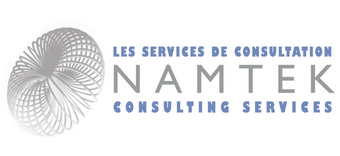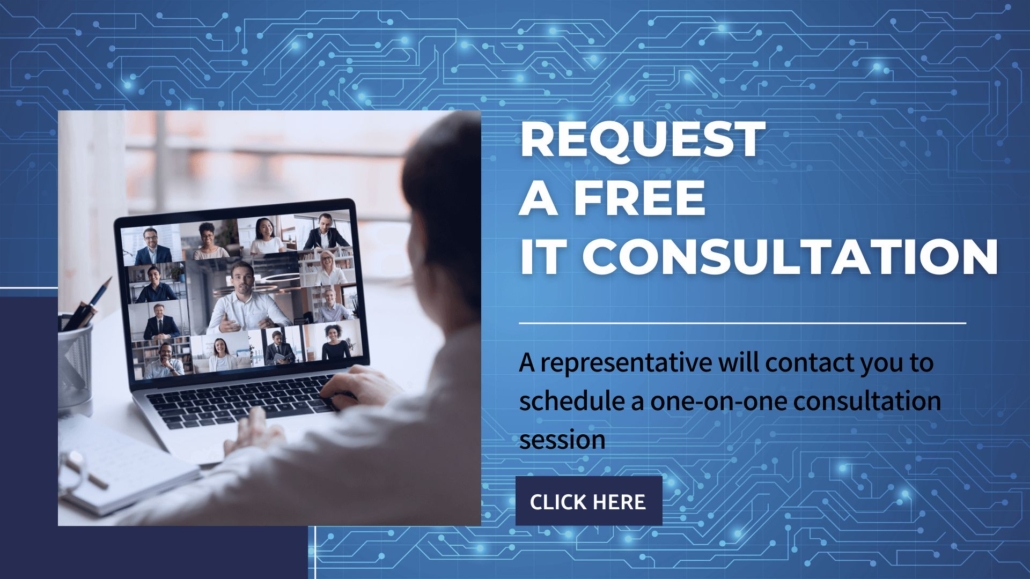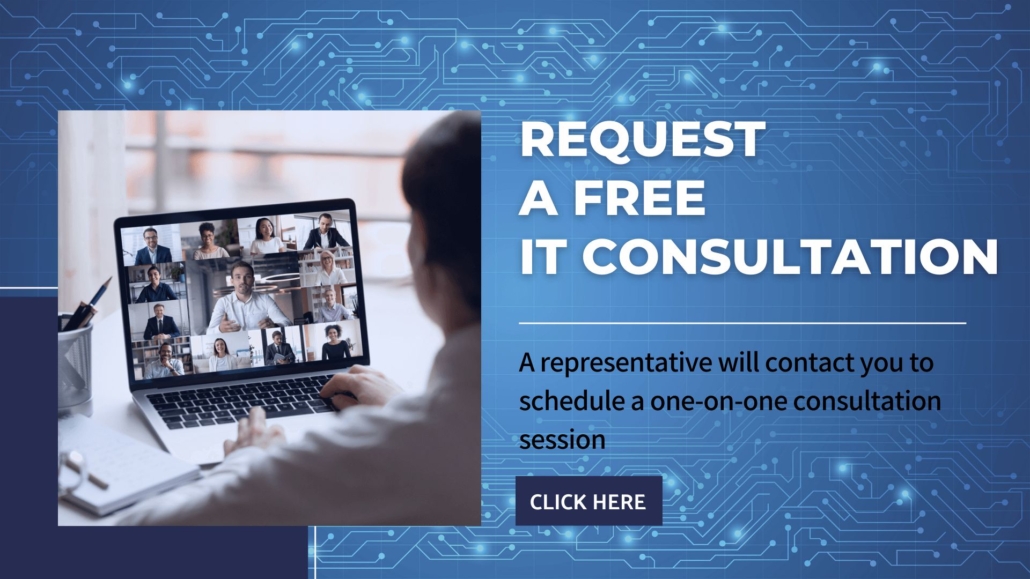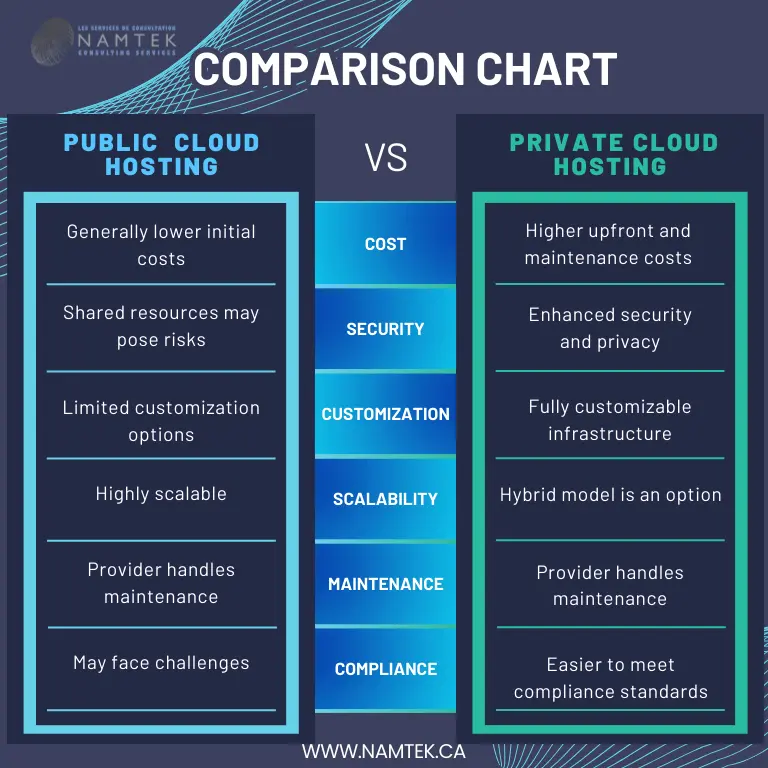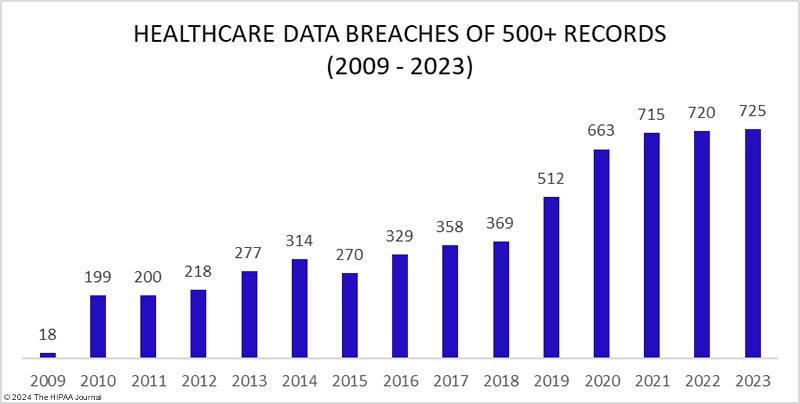Are you looking to streamline your organization’s grant management process for maximum efficiency? Choosing the right grants management software is crucial for boosting productivity and ensuring seamless operations. In this comprehensive guide, we will walk you through the essential factors to consider when selecting the best software solution tailored to your organization’s needs.
Intro: Grants Management Software
From tracking grant applications to managing fund disbursements, the right software can transform how you handle the entire grants lifecycle. With a myriad of options available in the market, it can be overwhelming to make the right choice.
However, by understanding your organization’s specific requirements and budget constraints, you can identify the ideal grants management software that aligns with your goals.
What is Grants Management Software (GMS)? Definition and Main Functions
Grants Management Software (GMS) is a software designed to automate the processes of applying, evaluating, distributing, monitoring, and reporting on grants. It helps both funders and grantees simplify administration and increase the transparency of fund distribution.
Grants Management Software (GMS) includes a wide range of features to automate and manage grant-related processes. The main functions can be divided into several categories:
1. Grant Application Management
- Online application forms
- Automatic check of applications for eligibility
- Data validation and error prevention
- Integration with external databases (e.g. tax or financial systems)
2. Application Review & Approval
- Customizable workflows for application evaluation
- Dashboard for tracking statuses
- Tools for collective voting and review of applications
- Automatic notifications about status
3. Fund Management & Disbursement
- Budget management and monitoring of financial flows
- Integration with accounting systems (e.g. QuickBooks, SAP)
- Generation of financial reports
- Monitoring compliance with funding conditions
4. Reporting & Compliance
- Generation of reports for donors and regulators
- Tracking key performance indicators (KPIs)
- Automatic creation of tax and audit documentation
- Compliance control
5. Grantee & Donor Management
- CRM for interaction with applicants and grantees
- Automated reminders and notifications
- Self-service portal for applicants
- Integration with mail services and calendars
6. Process automation and integration (Automation & Integration)
- Workflow setup to speed up application processing
- API integrations with ERP, financial and analytical systems
- Support for cloud storage and data security
7. Risk Management & Audit
- Built-in fraud detection mechanisms
- Tracking grant compliance
- Change history and logging of user actions
Depending on the specific needs of the organization, GMS can include additional functions, such as AI analytics, grant program forecasting or collaboration tools.
Who Uses GMS Most Often?
- Foundations and charities – use it to manage applications, evaluate applicants, monitor the use of funds and report.
- Government agencies – automate the distribution of budget subsidies and control the use of funds.
- Universities and research institutes – track research grants, project reporting and funding distribution.
- Non-profit organizations (NPOs/NGOs) – manage the application process, receiving and using grants.
- Corporate grant programs – companies that provide funding for social and innovative projects.
GMS usually includes functions for automating application submission, CRM for interaction with grantees, financial tracking and reporting, as well as compliance control to meet donor requirements.
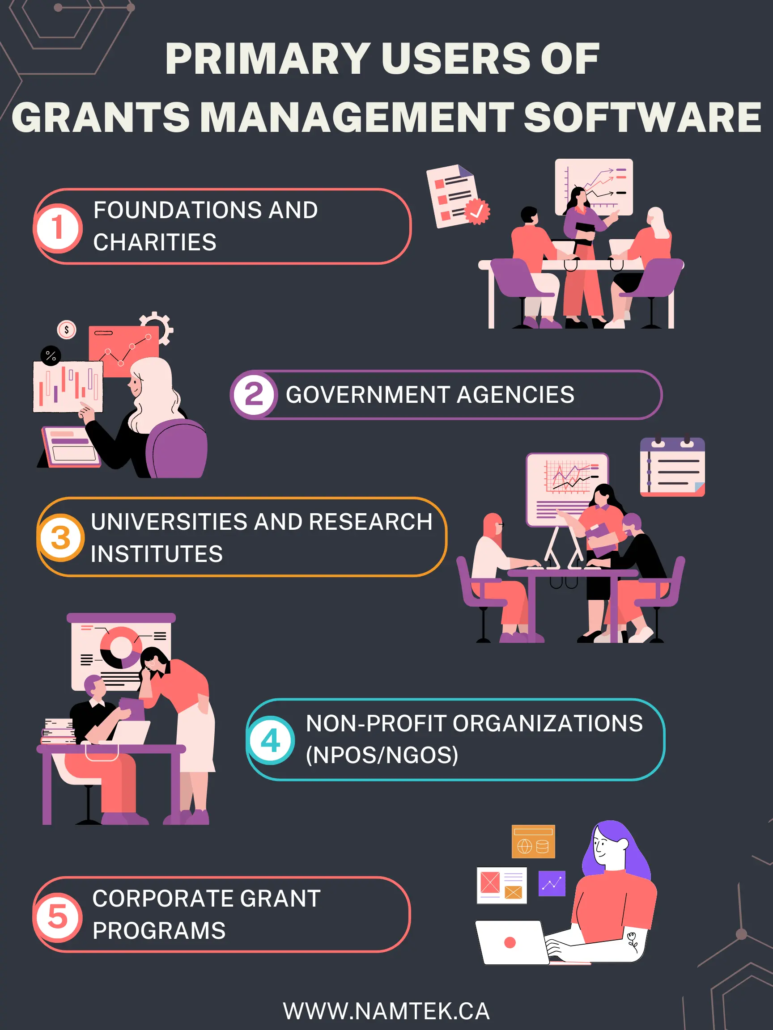
Why Efficient Grants Management Matters: 5 Key Impacts on Your Organization
Grants Management Software (GMS) significantly improves the efficiency of grant management by automating processes, reducing transaction costs, and providing transparency in the distribution of funds. The impact of GMS can be seen in several key areas:
- Grants Management Software Reduces Administrative Workload
- How? GMS Software automate processes such as application submission, compliance, and pre-approval.
- Benefits: This automation allows organizations to process more applications with less time and human resources. Thus, less paperwork, more impact.
- Grants Management Software Can Speed Up Processes and Improve Accuracy
- How? Automatic data checks, integration with accounting and government systems.
- Benefits: Eliminates human errors, duplication of data, and delays due to manual processing.
- Grants Management Software Provides Transparency and Control Over Fund Spending
- How? Built-in monitoring, reporting, and auditing tools.
- Benefits: Organizations can easily track how and where funds are spent, ensuring compliance and preventing fraud.
- Grants Management Software Can Increase satisfaction of applicants and grantees
- How? Due to self-service portals with user-friendly interfaces, and automatic notifications about application status.
- Benefits: Reduced waiting time, moreover, applicants receive more information about the process.
- GMS Ensuring compliance with regulatory requirements
- How? Built-in compliance mechanisms, automatic generation of reports for regulatory authorities.
- Benefits: Reduced risk of violations, fines and audit issues.
Thus, GMS transforms the grant management process, making it faster, more transparent and more efficient. Organizations can minimize risks, optimize resources and improve interactions with applicants and donors.
7 Must-Have Features of Grants Management Software (Compare Top Tools)
When selecting grants management software, it is essential to consider several key features that can significantly impact your organization’s operational efficiency.
Key features to look for:
Ease of use: The system should be intuitive so that employees can quickly figure it out and get started without lengthy training.
Process automation: Look for solutions that automate all stages, from application to reporting, to reduce manual operations and errors.
Integration with other systems: The ability to connect to accounting programs, CRM, and other tools helps ensure unified data management.
Data security: It is very important that the platform has reliable information protection, encryption, and compliance with security standards.
Flexibility of customization: The software should be easily adapted to the specifics of your organization and the different types of grants.
Reporting and analytics: Having tools for creating detailed reports and analytical dashboards will help track the effectiveness of the use of funds.
Support and maintenance: High-quality technical support and the ability to receive consultations are an important factor, especially at the initial stage of implementation.
These key points will help you choose a system that will not only be convenient and functional, but also reliable in the long term.

Types of Grants Management Software Available
There are several main types of grant management software on the market, which differ in deployment method, functionality, and target audience. Let’s look at the key categories:
1. By deployment method
Cloud solutions (SaaS)
These systems are hosted on remote servers and are accessible via the Internet. They are convenient for organizations that do not want to deal with the installation and support of server equipment. Cloud platforms are often updated automatically, which simplifies operation.
On-Premise solutions
Here, the software is installed on the organization’s own servers. This option is often chosen by organizations with special data security requirements or in cases where control over the IT infrastructure is a priority.
2. By functional focus
Comprehensive full-cycle platforms
These systems cover the entire grant process – from submitting an application to monitoring, reporting, and auditing. They are convenient for organizations that need a single tool to manage all stages of the grant process.
Modular solutions
Such systems allow you to select and use individual modules depending on the needs of the organization. For example, you can use only the application processing module or only financial control. This is convenient if you already have some of the tools and only need an addition.
3. By target audience and specialization
Specialized solutions for specific sectors
Some platforms are designed specifically for certain industries – universities, government agencies, charities or corporate programs. They take into account the specific requirements and processes typical for this area.
Universal systems
These solutions are suitable for different types of organizations and are not focused on a narrow specificity. They can be configured for different types of grant programs, which makes them flexible, but sometimes requires more detailed configuration for specific tasks.
So, when choosing grant management software, it is important to consider which deployment method is more suitable for you (cloud or on-premises), whether you need a full management cycle or individual modules are enough, as well as the specifics of your organization and data security requirements. This approach will help you choose the best solution that will effectively support your grant programs.
How to Choose Grants Management Software: 5 Budget-Friendly Factors
If you choose a grant management program (GMS Software), you need to consider a couple of important points, because the price of GMS Software consists of the base cost of the platform itself plus additional costs for integration, training, support, and possible customization.
First, the budget – they all cost differently, and the price depends on what functions you really need. The more functions – from submitting applications to detailed reporting and analytics – the higher the price.
Second, the payment model. There are subscription options (SaaS), where you pay every month or year, and there are options with a one-time purchase of a license. In the latter case, there may be separate costs for updates and support.
Another point is the number of users. If you have a large team, some systems calculate the cost per employee or the number of processed applications, so this can also increase the price.
In addition, the ability to integrate with other systems, such as accounting, CRM or ERP, is important. If deep integration is needed, this may require modifications and, accordingly, increase the cost.
Don’t forget about customization. If you need to adjust the system to the specifics of your process, this also adds to the price, since you often have to order additional settings.
And, of course, support and training are important. Sometimes the price includes consultations, setup, and staff training – and sometimes all this is paid for separately.
So, it all depends on what exactly you need and what priorities your organization has, but it is important to evaluate not only current costs, but also potential time savings, reduced operating costs, and improved grant management quality.
Useful Reading: Mastering Grants Management: Comprehensive Insights from Namtek Consulting Services
Implementing Grants Management Software in Your Organization
Our company offers comprehensive implementation of GMS, while we implement a turnkey project, our specialists take on all technical aspects of the project, and the client prepares the necessary data and describes their internal processes. Thus, the project implementation process can be divided into several key stages:
Planning and requirements analysis
At this stage, we define the project goals together with the client and draw up a detailed work plan. The client needs to provide up-to-date information on existing processes, requirements and expectations from the system.
We analyze the collected data and develop an implementation plan.
Preparation of data and documentation
If the client has already implemented grants, he needs to collect and prepare data and documentation in order to ensure the correct migration of information to the new system. If necessary, we consult on data cleaning and structuring in order to minimize possible errors.
Installation, configuration and integration
Our specialists are engaged in the installation of software and its configuration, taking into account the specifics of the client’s work. We can integrate the system with existing corporate platforms (e.g. accounting systems, CRM or ERP) to ensure a single flow of information. This stage also includes setting up workflows and automating key tasks.
Testing and training
Before the official launch, we conduct comprehensive testing of the system to ensure that all modules work correctly. At the same time, we organize training for the client’s employees. Training sessions include both basic instructions on how to work with the system and more in-depth training for responsible users.
Launch and subsequent support
After successful testing, the system is put into operation. We provide ongoing technical support, promptly resolve any issues that arise and collect feedback for further improvements. Regular checks and updates help maintain high efficiency of GMS in the long term.
Thus, the implementation of GMS with us is a joint process, where we, as a provider, are responsible for technical implementation, configuration and integration, and the client prepares data, defines requirements and provides information on internal processes. This approach helps minimize risks and ensures a smooth transition to the new system, which ultimately leads to increased efficiency in grant management.
Training & Support Best Practices for Grants Management Software Success
Training and support from the system provider is a critical part of grant management software. Make sure that your provider provides comprehensive training for users. Because training ensures that your employees are using all of its features effectively. Work with your software integrator to determine which training method is best for you. This could include hands-on training, webinars, access to user manuals or resources.
In addition to initial training, ongoing support from the IT system provider is critical. Because during peak application periods, the system is critical to operate smoothly, and if employees have any questions, they should be able to quickly resolve them with the system provider.
Case Study: How NICHI Streamlined Grant Management in 30 Days
Learning about real-life GMS implementations will help you gain a better understanding of not only the system itself but also the way a particular IT provider operates. It is important to remember that the IT provider that will implement the system and provide support is of utmost importance to the project. When National Indigenous Collaborative Housing Inc. (NICHI), a non-profit organization dedicated to improving housing conditions for Indigenous communities in Canada, needed a robust grants management system (GMS), they turned to our company for support because they were facing a major challenge. Due to the fact that at that time, they were a new, newly formed organization and had less than 30 days to implement a new system that could effectively and reliably manage contribution funding. Off-the-shelf solutions did not fully meet their unique needs, requiring extensive customization.
Our company Namtek Consulting Services analyzed the needs and specifics of NICHI. We helped define and set up the right GMS for NICHI. Our team of specialists provided training and technical support to users. Thanks to our rapid implementation, NICHI successfully launched its funding program on time and now operates with a robust and efficient grant management process. Read the full case study here: NICHI – Implementation of a customized Grants Management System (GMS)
Conclusion: Achieving Success with the Right Grants Management Software
In conclusion, choosing the right and appropriate grant management software for your company is an important step for organizations, which directly impacts the organization’s future success. We understand that it is sometimes very difficult for organizations to make a choice, as it requires considering many factors, such as key features of programs, your budget, the possibility and necessity of integration.
In addition, it is necessary to provide for the availability of ongoing support for users. Therefore, as experts, we help companies overcome all these difficulties in choosing and implementing GMS. Contact us for an initial free consultation with our experts.

